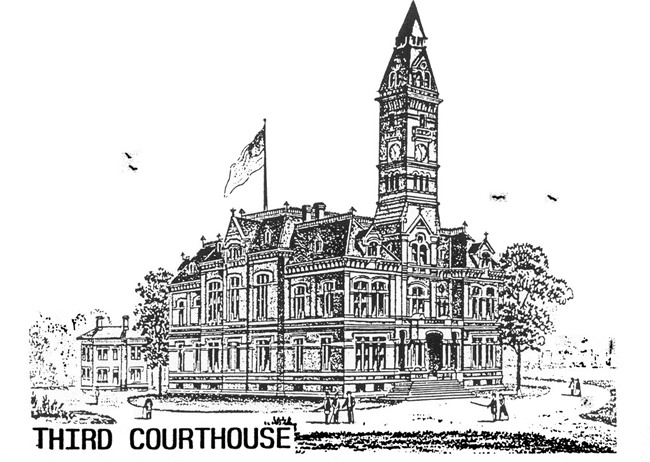By 1880, the jail was condemned as unfit and unsanitary, and the small courthouse was not the proper edifice for the growing county so both buildings were removed from the square to ready the site for a new building. A jail was built on East Fourth, and work began on the present courthouse in 1881. Completed by February 1883, the new courthouse was made of thick brick walls with a tower which continues to dominate the Maryville skyline. The building is 111 feet 6 inches by 70 feet and cost $60,000. The cornerstone contains many historic items and remembrances of that period. Contractors were Allen and Allen of St. Joseph, and the architect was Edmund Eckel, who at the same time designed the unique rotary jail, now replaced. Called "Modern Renaissance" when it was built, today the style is described as having Italianate features. The red brick was made in St. Joseph and the sandstone was brought from Parkville. At first the tower clock had to be wound every day until a motor was applied to the works in the 1940's.
At a dedication in 1883, the portraits of the circuit judges serving to that date were placed on the walls of the court room. The artist was Mr. Churchill, who made each of the portraits with grey-blue background and had them framed alike. Judge William Herron, who commanded a Union regiment and was commissioned its colonel, Judge I. C. Parker, later to become the famous "hanging judge" of Arkansas Territory, are among those first circuit judges to be honored.
In the 1970's, Nodaway's beautiful courthouse was at risk. Consultants recommended it be taken down and a new modern building be erected in its place. Concerned citizens and a wise county government urged renovation, and when accomplished brought about placement of the building on the National Register of Historic Places. Today, monuments dot the law in memory of veterans of the various wars, and these include a marble bench dedicated to black soldiers who served from Nodaway County. A small monument to an elm tree, which shaded the first county offices as they met, is east of the building. The millstone of Lanning's Mill from what is now Ravenwood area has found a resting place by the front sidewalk.
